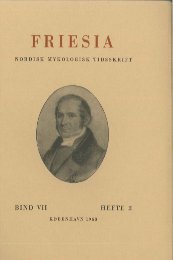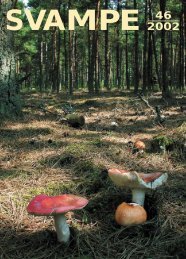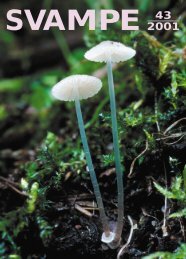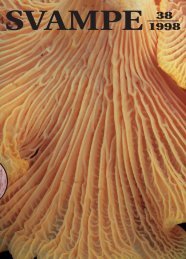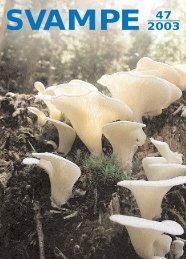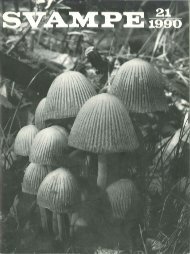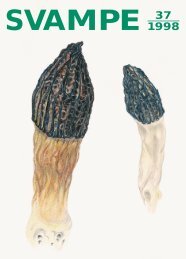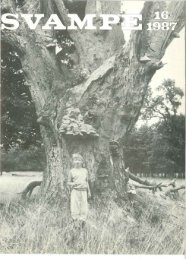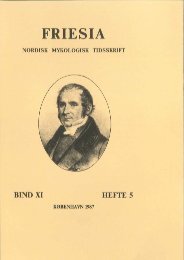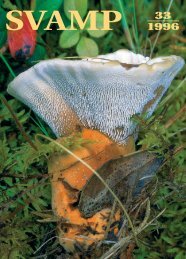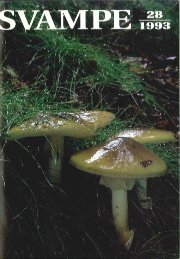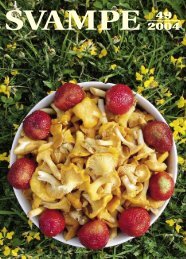Friesia X, 4-5
Friesia X, 4-5
Friesia X, 4-5
Create successful ePaper yourself
Turn your PDF publications into a flip-book with our unique Google optimized e-Paper software.
- 259-<br />
Perithecia of L. nodorum have not previously been reported on<br />
barley. However, the development of pycnidia on the barley leaves<br />
inoculated with cultures obtained from ascospores clearly furnishes<br />
the evidence that we were dealing with the pycnidial and perithecial<br />
stages of the same species.<br />
It is finally concluded that the pathogen under investigation was<br />
L eptosph aer i a nodorum and t hat it was present in both t he pycnidial<br />
a nd perithecial st age. F urthermore that t he pathogen was responsible<br />
for the disease symptoms deseribed on barley.<br />
PHYSIOLOGIC SPECIALIZATION<br />
In the literature there are several in dications that physiologic<br />
specialization occur within L eptosphaer ia nodorum. WEBER (1922)<br />
proved experimentally that isolates from wheat also infected rye and<br />
Poa pratensis but not eight other genera of Gr ami nea including<br />
several species of Hordeum. His statement in a later publication<br />
(WEBER 1923) that Hordeum vulgare pallidum was susceptible to<br />
L. nodorum would appear to be erroneous. JOHNSON (1947) found that<br />
six isolates of L. nodorum strongly infected wheat , but caused only<br />
traces of symptoms on barley.<br />
In preliminary infection experiments with two is olates of L. no dorum<br />
from barley and two from wheat the present author found that<br />
barley isolates did n o t attack wheat and wheat isolates did n o t<br />
attack barley. In order further to clarify whether L. nodorum is<br />
separated into [or mae speciales more extensive infection experiments<br />
were performed partly on adult plants in the field, partly on seedlings<br />
in pots.<br />
In field experiments a composite of two isolates from barley were<br />
used to inoculate barley and wheat. Similarly a composite of two<br />
isolates from wheat were used to inoculate barley and wheat. The<br />
inoculum was prepared by macerating vigorously growing cultures<br />
in a Waring blender with water supplemented with 0.1 % gelatine. On<br />
June 18th the mycelial suspensions were sprayed onto plants of barley<br />
and wheat with an atomizer. At the time of inoculation ear emergence<br />
was complete in the wheat and had just started in the barley. About<br />
2 X 15 plants of each species were inoculated and subsequently covered<br />
by plastic bags containing wet cotton in order to maintain high<br />
humidity, The plastic bags were removed after 3 da ys.<br />
17*



